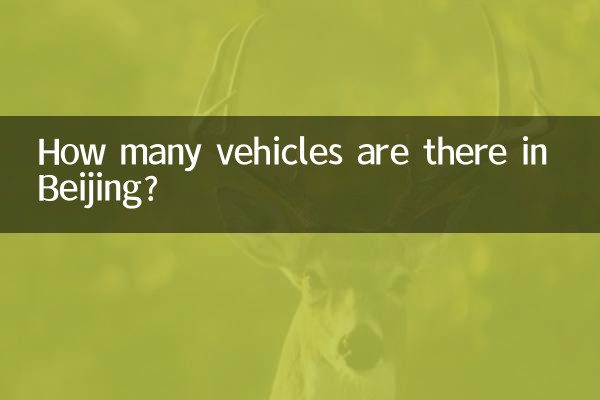How many vehicles are there in Beijing? ——Analysis of motor vehicle ownership and trends in the capital
In recent years, as the capital of China, the number of motor vehicles in Beijing has been the focus of public attention. With the acceleration of urbanization and the improvement of residents' living standards, the number of vehicles in Beijing continues to grow, posing huge challenges to traffic management and environmental protection. This article will combine hot topics and structured data from the entire Internet in the past 10 days to provide you with a detailed analysis of the current situation of vehicles in Beijing.
1. Current situation of motor vehicle ownership in Beijing

According to the latest statistics, as of 2023, the number of motor vehicles in Beijing has exceeded 7 million. The following is the change in the number of motor vehicles in Beijing in the past five years:
| Year | Number of motor vehicles (10,000 vehicles) | growth rate |
|---|---|---|
| 2019 | 636.5 | 3.2% |
| 2020 | 657.0 | 3.2% |
| 2021 | 675.0 | 2.7% |
| 2022 | 690.0 | 2.2% |
| 2023 | 705.0 | 2.1% |
As can be seen from the table, the number of motor vehicles in Beijing has been increasing year by year, but the growth rate has slowed down. This is closely related to the purchase restriction policy and environmental protection measures implemented by the government.
2. Distribution of Vehicle Types
There are various types of vehicles in Beijing, including private cars, taxis, buses and trucks. The following is the vehicle type distribution data in Beijing in 2023:
| vehicle type | Quantity (10,000 vehicles) | Proportion |
|---|---|---|
| private car | 580.0 | 82.3% |
| Taxi | 7.0 | 1.0% |
| bus | 3.0 | 0.4% |
| truck | 50.0 | 7.1% |
| Others | 65.0 | 9.2% |
Private cars occupy an absolutely dominant position, accounting for more than 80%, while the number of taxis and buses is relatively small, reflecting the high dependence of Beijing residents on private cars.
3. Vehicle Density and Traffic Pressure
Beijing's vehicle density ranks among the highest in the country. According to statistics, the vehicle density per square kilometer in Beijing is about 430, which is much higher than other first-tier cities. The following is a comparison of vehicle density in Beijing and other major cities:
| city | Vehicle density (vehicles/square kilometer) |
|---|---|
| Beijing | 430 |
| Shanghai | 380 |
| Guangzhou | 350 |
| Shenzhen | 320 |
High vehicle density directly leads to Beijing’s traffic congestion problem. According to statistics, the average vehicle speed in Beijing’s morning and evening rush hours is only 20 kilometers/hour, and some road sections are even lower than 10 kilometers/hour.
4. Development of new energy vehicles
In recent years, Beijing has vigorously promoted new energy vehicles to reduce environmental pollution. The following is the growth of new energy vehicles in Beijing:
| Year | Number of new energy vehicles (10,000 vehicles) | Proportion |
|---|---|---|
| 2019 | 20.0 | 3.1% |
| 2020 | 30.0 | 4.6% |
| 2021 | 45.0 | 6.7% |
| 2022 | 60.0 | 8.7% |
| 2023 | 80.0 | 11.3% |
As can be seen from the table, the number and proportion of new energy vehicles are increasing year by year, reaching 800,000 vehicles in 2023, accounting for more than 11%. This trend shows that Beijing has achieved remarkable results in promoting green travel.
5. Future Outlook
Although the number of motor vehicles in Beijing is still growing, the growth rate has slowed down significantly. In the future, with the further improvement of public transportation and the popularization of new energy vehicles, Beijing's vehicle structure will be more optimized. The government plans to increase the proportion of new energy vehicles to 20% by 2025 and further optimize traffic management measures to alleviate congestion problems.
Overall, the number of vehicles in Beijing is huge, but through scientific policy guidance and technological innovation, the capital's traffic conditions are expected to gradually improve. The public should also actively respond to the call for green travel and contribute to easing traffic pressure and improving the environment.

check the details

check the details